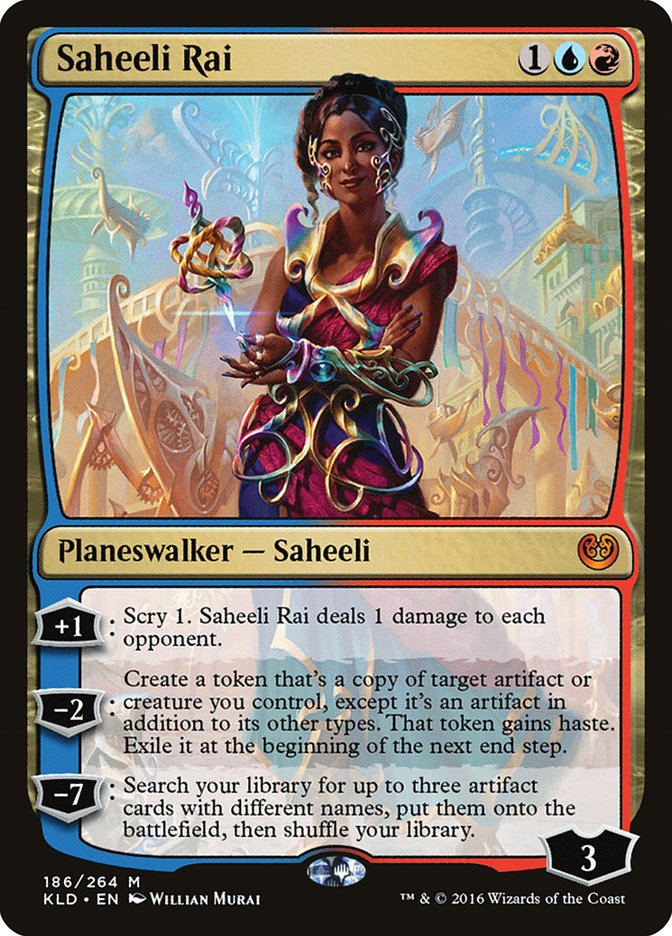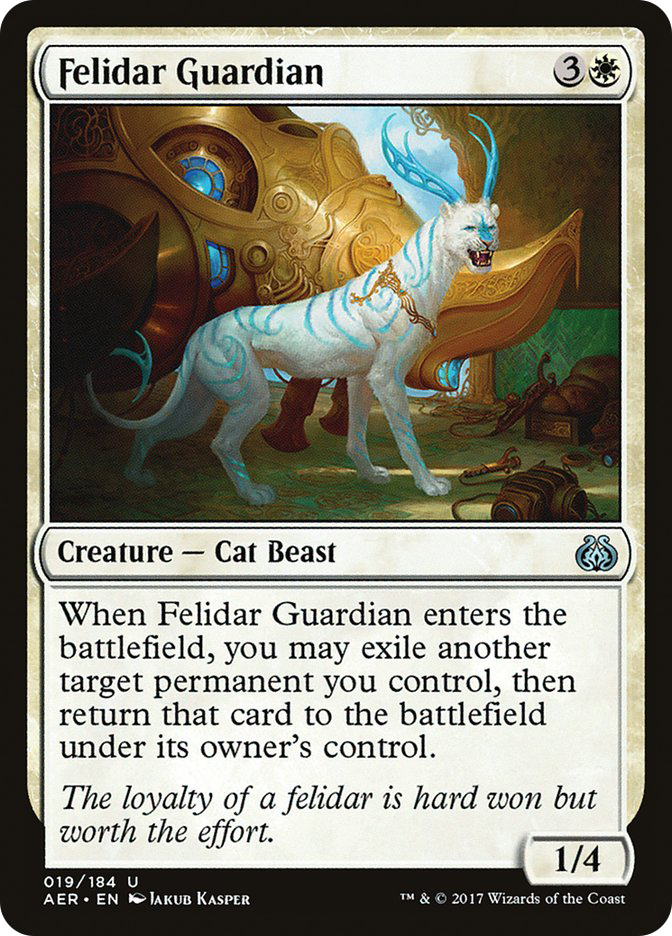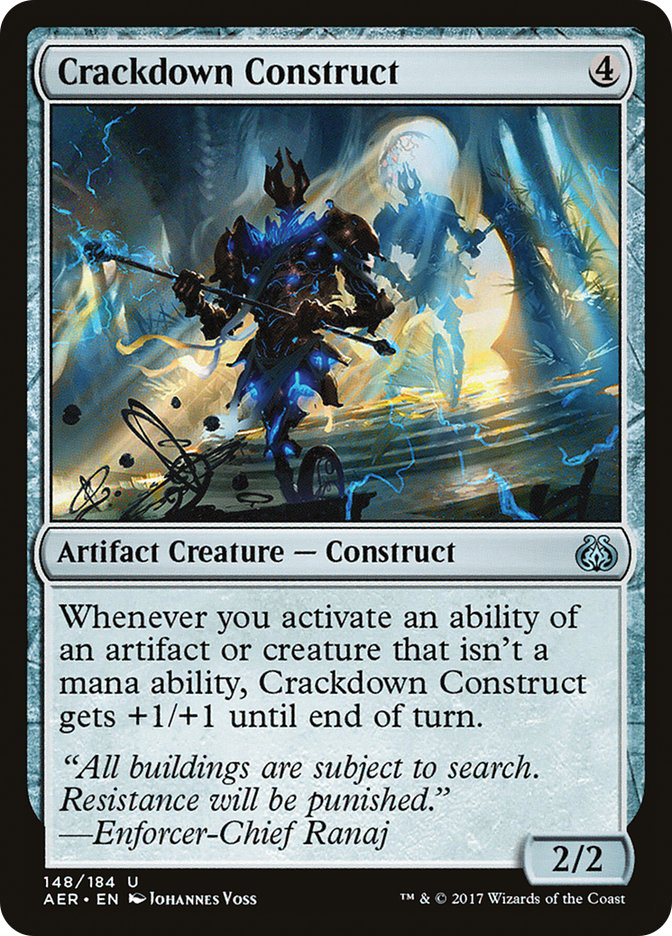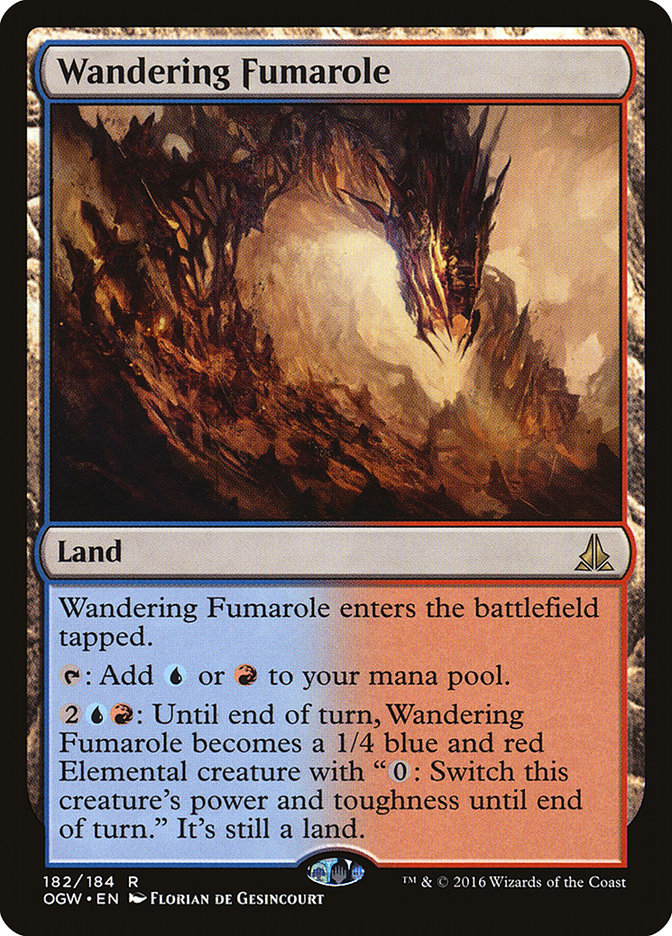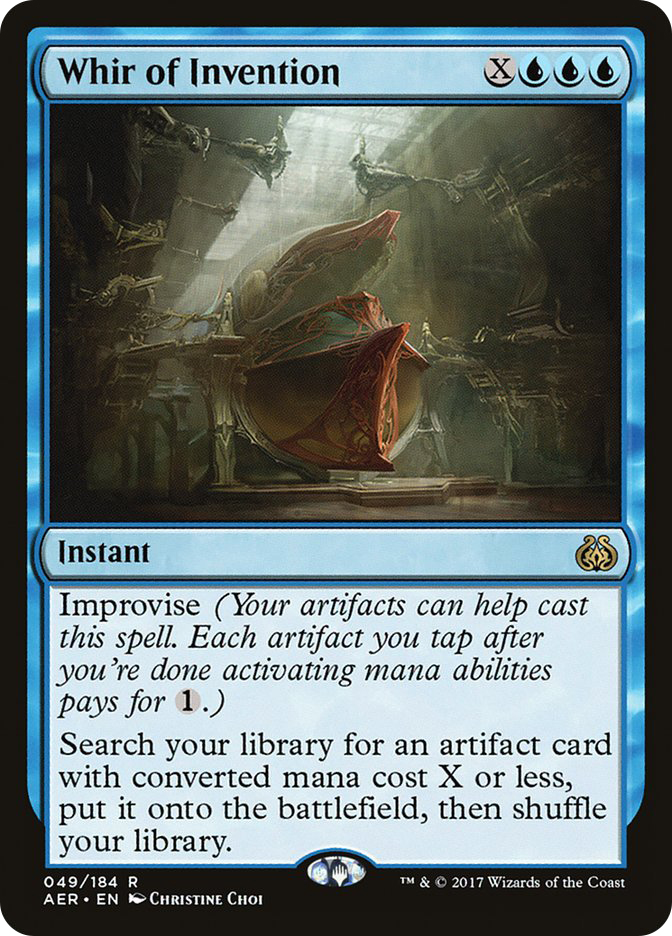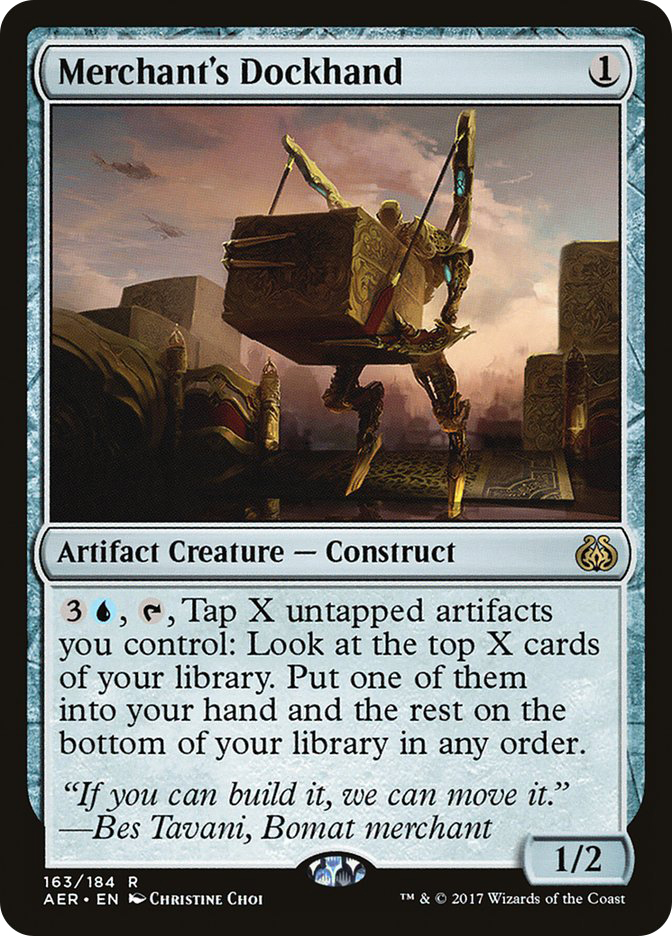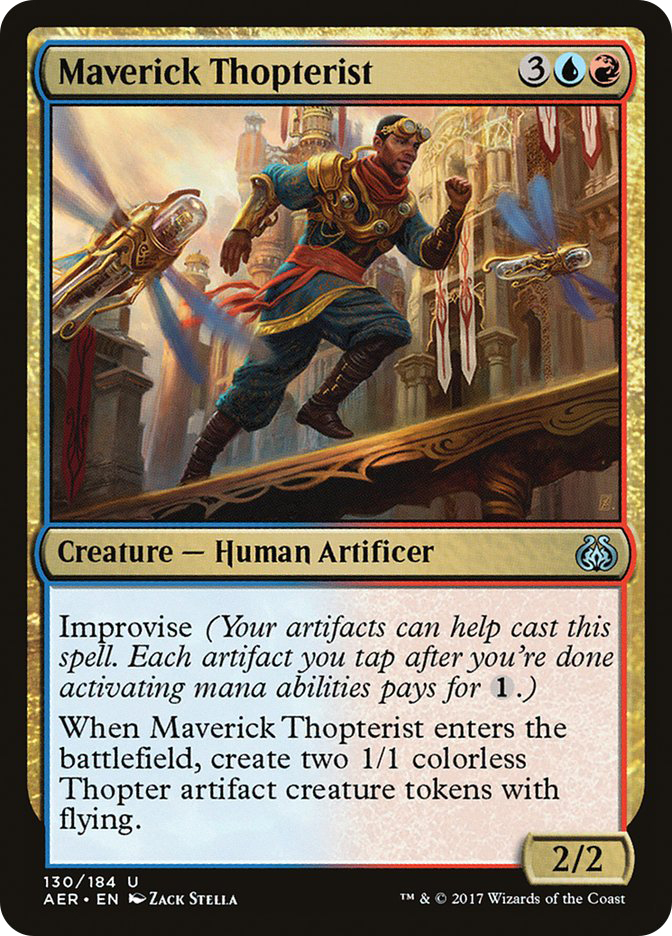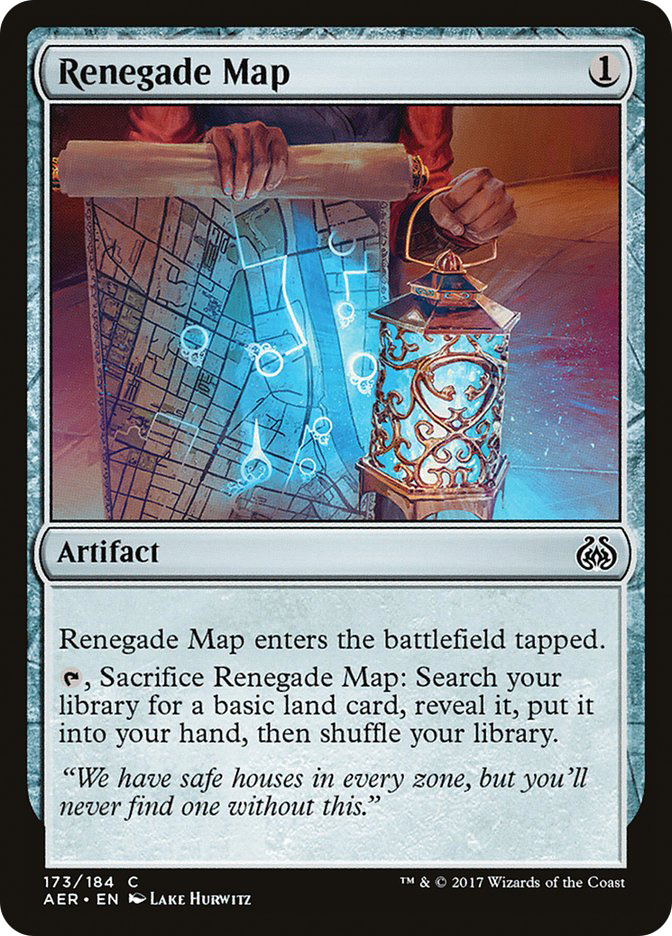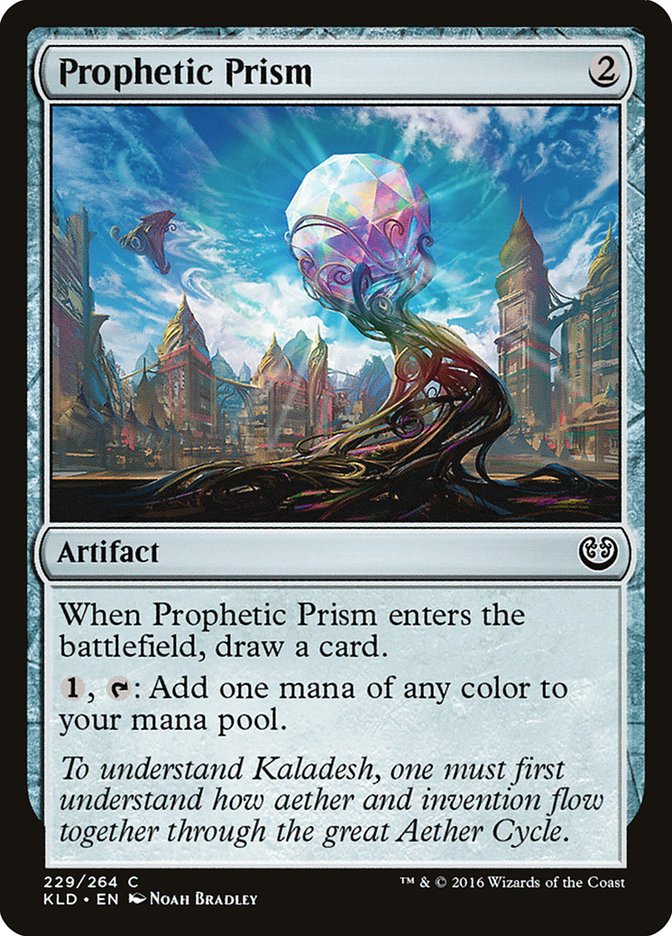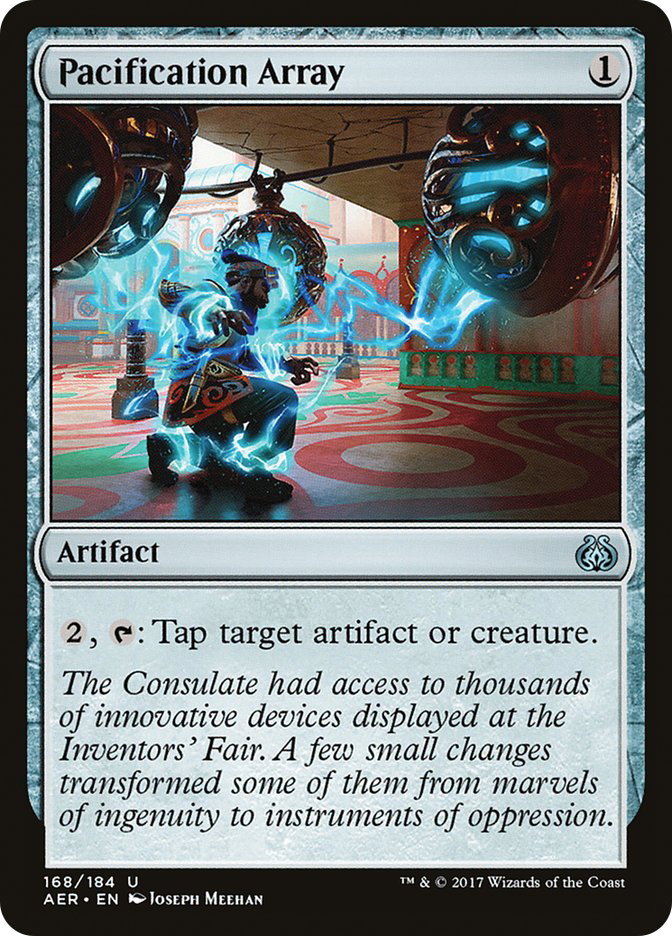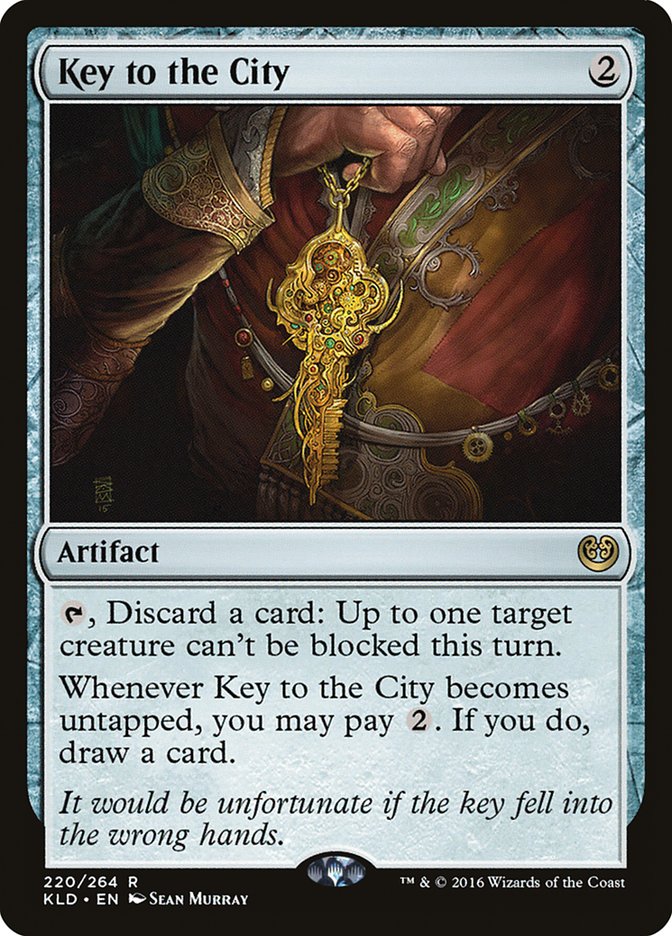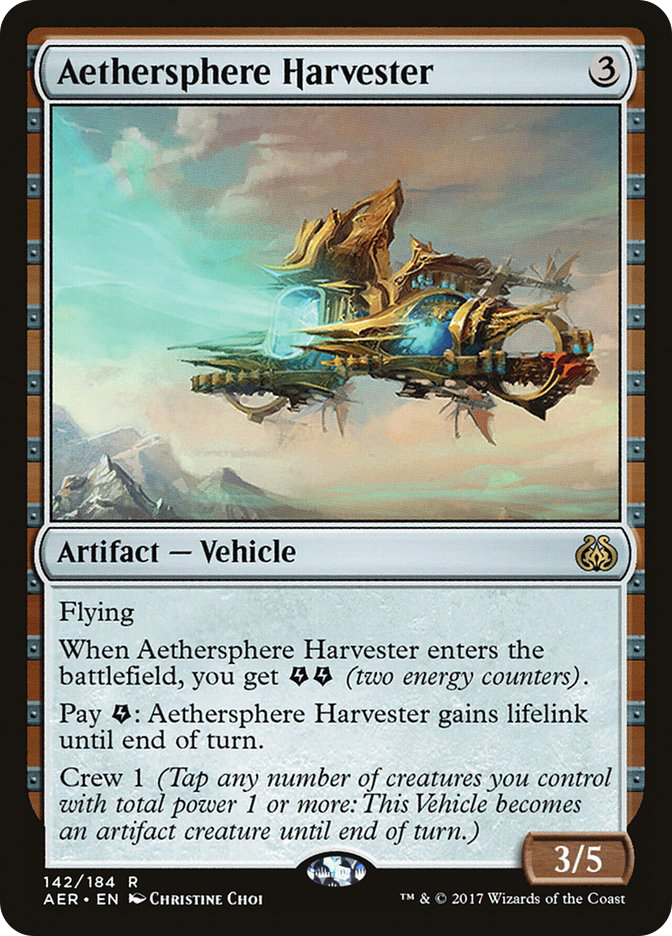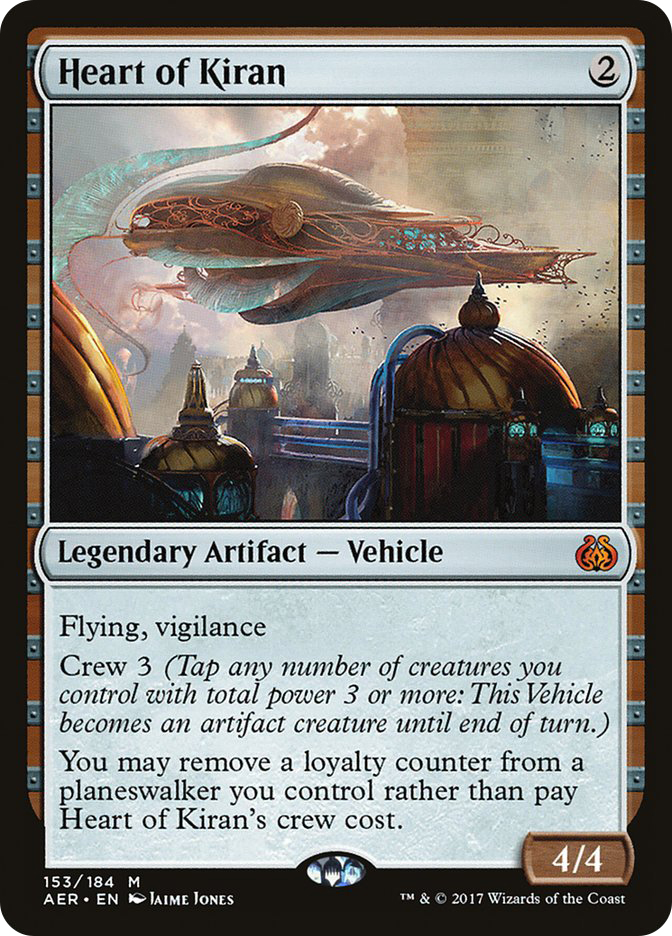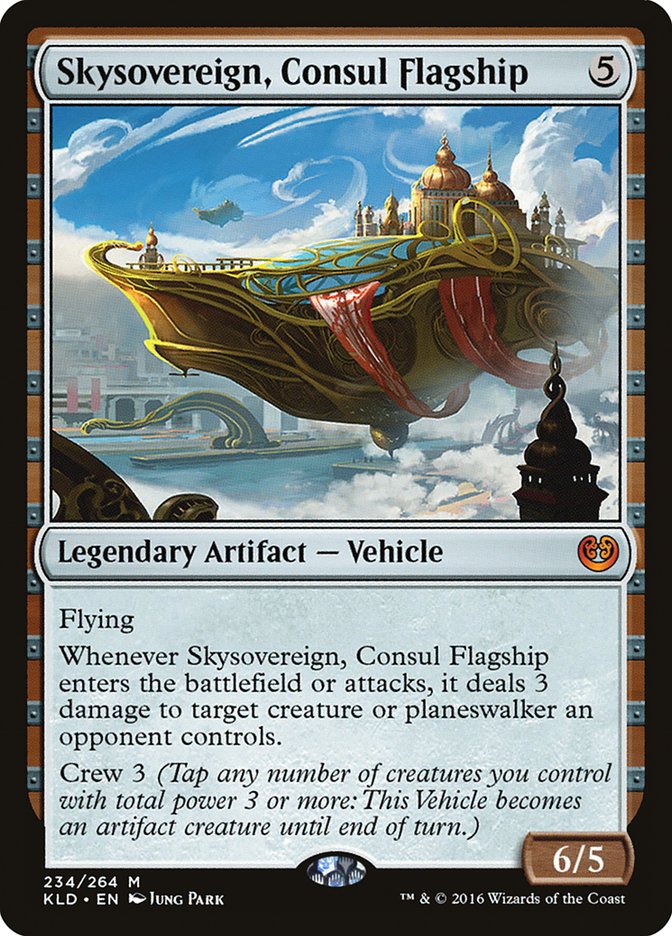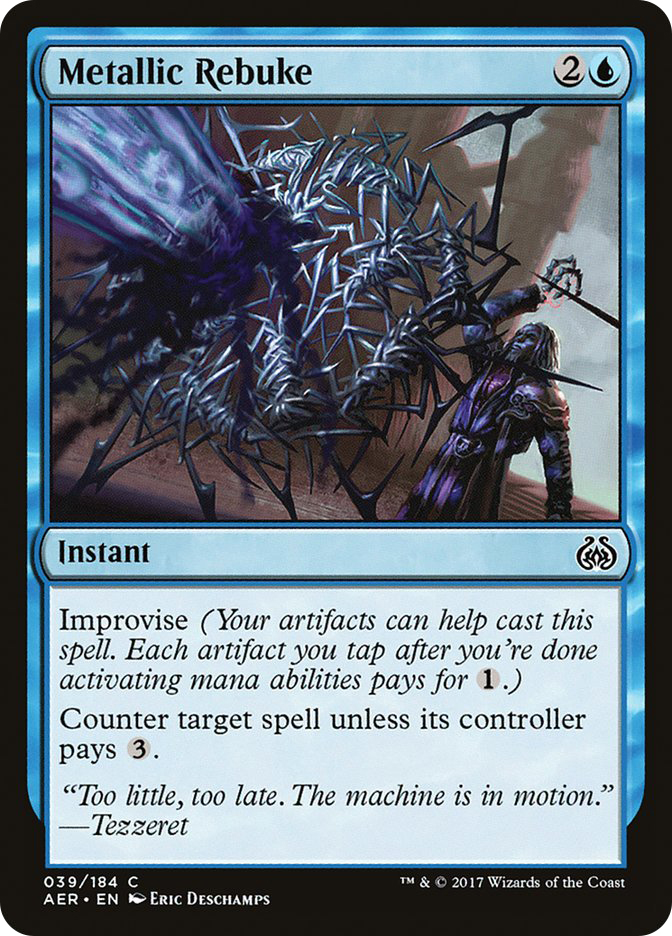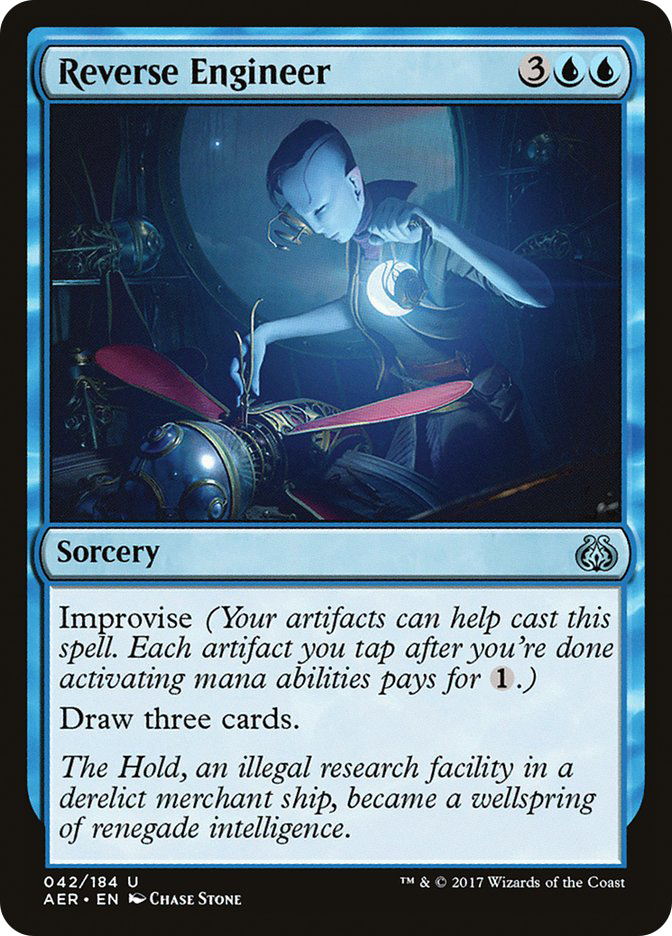After the recent lack of bannings, many Standard players will still have to protect themselves from combo Public Enemy Number One in our format: Felidar Guardian.
Like it or not, these two cards were printed in the same block, so unless one of them gets banned, I doubt this combo will disappear until Kaladesh and Aether Revolt rotate. That’s a long time to wait around, and while combo players are rejoicing and the rest of us struggle to come up with proactive answers to this infinite combo, another such combo has been left by the wayside.
Pretty much the day Crackdown Construct was revealed, people started talking about this two-card combo.
When you activate Wandering Fumarole, turning it into a creature, you can flip its power and toughness back and forth as many times as you like, responding to a spell or ability on the stack with even more flip-flopping. Crackdown Construct will get a power boost with each activation, ultimately becoming arbitrarily large and smashing for that much damage in combat.
The combo even curved out; you could cast the Crackdown Construct on turn 4, play a tapped Wandering Fumarole on turn 5, animate it (the ability doesn’t care if it’s tapped), and go arbitrarily large.
So what’s stopping this combo from being just as good as the Felidar Guardian combo? Saheeli Rai and Wandering Fumarole are both hard to target to make up for their hallmark creatures’ weakness to removal. Same difference, right?
Well, not exactly. Felidar Guardian plus Saheeli Rai is not only one turn faster, it’s much more reliable. It cares much less about the battlefield state. If you assemble the two pieces and your opponent doesn’t have removal, you’ve got it. You’ll make arbitrarily large numbers of attackers and win. With Crackdown Construct, your creature has to be able to attack unimpeded, without blockers, and it has to survive activation. Being an artifact isn’t too big a deal; Natural State and Fragmentize, the biggest specific answers, can’t hit it when you’re going off anyway. Also, a lot can happen in that one extra turn it takes.
Still, I know combo players are always out there looking for the next big thing, so I wanted to make sure that Crackdown Construct, while seemingly worse in every way, at least could make a fun deck that could reliably defeat your opponent.
Combo decks are all about consistency. My first thought, funny enough, was a Temur Energy plan with Aetherworks Marvel finding the threat instantly and using the rest of my resources to build energy up. After I fell asleep at the thought of building yet another Aetherworks Marvel clone, I decided to start over, looking at the most recent set for help. Thankfully, Aether Revolt knew how to deliver.
While mostly used to recover combo pieces for decks using Paradox Engine and Aetherflux Reservoir, the artifact line can help us get our Construct at instant speed. I am confident, at least for Game 1, that it will likely be our best path to victory. Your opponent taps their attackers against a seemingly empty battlefield when I Whir for a Construct.
Well, I can dream, at least.
The heavy artifact theme required to effectively support Whir of Invention should be fairly familiar now, but I wanted to make sure this deck was both consistent as well as non-reliant on the Crackdown Construct finisher.
Let’s see what can come up with on a first try.
Creatures (10)
Lands (19)
Spells (31)

Creatures
Merchant’s Dockhand is no all-star, but it’s a one-drop artifact that can get a good activated ability on deck for your Crackdown Construct. It draws you a card, digs you deeper if you don’t need to cast Metallic Rebuke, and does all-around good things for the deck.
Maverick Thopterist seems like a great time-waster to me. The deck should be able to regularly cast it on turn 3, potentially even with another one-drop alongside it. With a good enough run of three one-drops, you can even cast it turn 3 and have Metallic Rebuke available, thanks to your Thopters. Nice! Thopterist isn’t the most impressive card, but it’s a role-player here, much like everything that’s not a Construct. The flying damage, and the fact that there are four of them, does give you an alternate avenue to victory, albeit a slow one.
I have only two copies of the Construct, mostly because of the full set of Whir of Invention. Unlike Saheeli Rai, it’s not a card that does much outside of win. Saheeli Rai at least scrys and copies useful stuff. And, yes, I did consider Saheeli Rai in this deck. I decided against it, but we’ll come back to that.
Spells
Most combo decks rely on their spells to get things together, even if it is a creature that eventually does the dirty work.
Crackdown Construct triggers on activated abilities from creatures or artifacts, so long as they’re not mana abilities. Clearly, Prophetic Prism’s ability is a mana ability, but the artifact-ness and its ability to fix for the heavy cost of Whir of Invention is still worth the deck space. Sadly, even though Terrarion’s activated ability causes you to sacrifice it, it’s still a mana ability. For comparison, Black Lotus’s ability is a mana ability. Hmm…never thought I’d compare a common reprint to a card with thousands of dollars. Check that right off the bucket list. On the other hand, Renegade Map’s tap ability is not a mana ability, so I can add additional free triggers by slowrolling my excess Renegade Maps.
Key to the City solves one of our biggest problems: getting past a 0/1 Plant token. With twelve improvise sources, tapping the Key of the City to do so will open it up for a card draw the following turn without having to pay for the privilege with a card now. Pacification Array is more generally applicable, and it counts as an activated ability.
This is the part of the deck that interests me. Vehicles are known game-breakers, but they also come with a manaless activation of an activated ability, and they can feed each other to do so. Aethersphere Harvester, which can be crewed by anything, can then activate Heart of Kiran, which can then smash or tap to activate your Aethersphere again. That’s all for free, and while it may not be nearly as scary as a Wandering Fumarole activation, I fear it may be more common than the deck’s ideal sequencing.
The improvisers are important, too; Metallic Rebuke continues to overperform in the early- and mid-game for me, so I’m going to keep jamming it until it makes me sick. Reverse Engineer, while not as necessary as it is in decks with non-cards like Bonesaw and Ornithopter, is still a nice tool to restock and find the pieces you need.
Before building a sideboard, I wanted to try it out online and hammered away at a couple of casual games.
Hmm…
Not quite there.
It’s not the deck was bad, it was just…well, uninspired, I suppose. It didn’t have any heat; like the artifacts it played, it had no soul, no spark. The deck ran reasonably well, and Maverick Thopterist, while fragile, did a fine job of holding things down while I assembled the team. There may have even been room for a third color; in fact, what it didn’t need was artifacts.
I’ve been playing artifact-heavy decks for a while now. While they’re fun, they all start to feel the same after a while. The only difference was, this time, I assembled an insta-win package on the side. Same lines of play as usual; crack the Renegade Map only if you need a land, keep Metallic Rebuke up at all times, and count your artifacts when activating Merchant’s Dockhand. Ho-hum.
To really have fun with that, we’re going to have to reach a bit farther. Or, in this case, a bit backward.
This was one of my favorite cards in Battle for Zendikar Limited; it had great on-battlefield presence, could attack with haste on turn 3, and was always a relevant card in a format where an army of Scions could be given haste to close out the game. Straightforward, but solid design.
Alongside Crackdown Construct, it gives the Construct haste, meaning you’re ready to go the turn it comes in. You can continue to activate it so you can give your Construct +1/+1 with each activation. Now, rest assured, I haven’t lost my feet; I understand that this is basically a clumsy way to build Crypt Ripper, and that’s not exactly a five-alarm fire right there. Instead, we can build the deck to be a higher-pressure, riskier deck where an infinite combo isn’t as necessary as it was with the first deck.
I liked the Vehicles from the last deck, and with Forerunner of Slaughter being able to crew any of them and give them haste, we might have the makings for a solid deck here.
Creatures (15)
- 4 Forerunner of Slaughter
- 2 Barrage Tyrant
- 4 Herald of Kozilek
- 1 Dimensional Infiltrator
- 4 Crackdown Construct
Planeswalkers (3)
Lands (22)
Spells (20)

Now I feel the fire.
This deck has a slightly different plan: build a solid base, plug away at them as best as you can, and then crush them once you have the resources to cast or do what you need all at once. The two big creature inclusions are Herald of Kozilek and Barrage Tyrant. Herald obviously fits the cost reduction plan, shrinking Prophetic Prism (a necessary evil with “four” colors) to nearly free, and it also makes each Vehicle and ramp card cheaper.
I also peppered in some planeswalkers. I like Saheeli Rai because she can copy the Construct, thus giving it haste, and if you need to attack with it and your original copy, the opponent must block two things. Chandra, Torch of Defiance is a solidly short clock, and her ability to pump in mana helps keep the velocity up. Slip Through Space replaces Key to the City; I doubt it’ll ever end the game for me, but we’ll try it.
This version went through the same gauntlet of four games…plus four more. Then another. Then I wrote this article and went back to play it some more. The fact that the deck had the potency of an arbitrarily large win underneath it basically meant I could have fun playing Magic and then close the door when my opponent went for the kill. Unlicensed Disintegration is a solid removal spell, and the pressure of Vehicles and double Forerunner of Slaughter is pretty terrifying. While the numbers might not be totally right, this was a fun way to play Crackdown Construct without either being a slave to theme or being so drab as to feel like you’re playing an all-new deck. Truly, if the Construct wasn’t in the deck, it might not be as good, so that has to be worth something.
Crackdown Construct’s flexibility lets it fit in a lot of places; I could even see it straight out of the sideboard in a control deck where your opponent sideboards out instant-speed removal. Have you found a perfect place for this imperfect combo piece?


